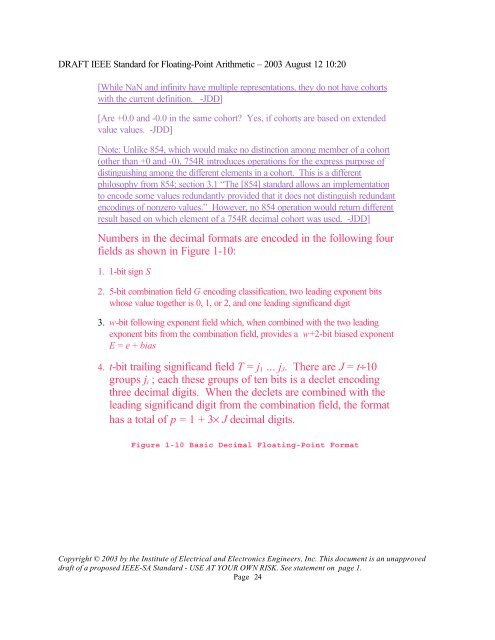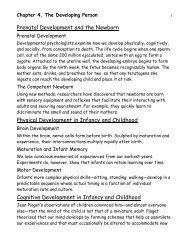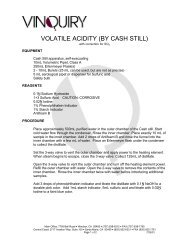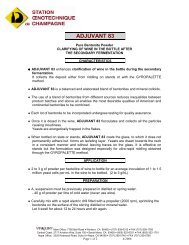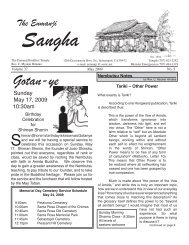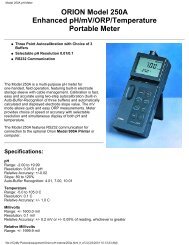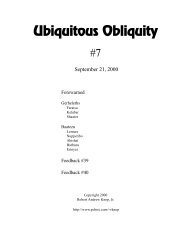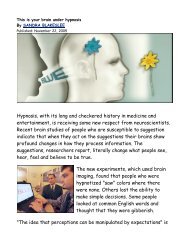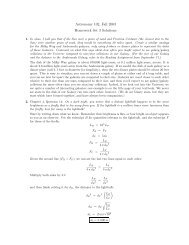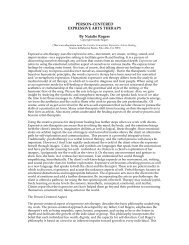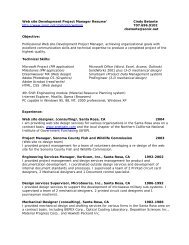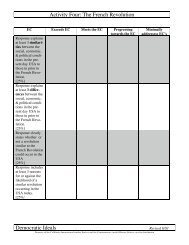DRAFT IEEE Standard for Binary Floating-Point Arithmetic - Sonic.net
DRAFT IEEE Standard for Binary Floating-Point Arithmetic - Sonic.net
DRAFT IEEE Standard for Binary Floating-Point Arithmetic - Sonic.net
Create successful ePaper yourself
Turn your PDF publications into a flip-book with our unique Google optimized e-Paper software.
<strong>DRAFT</strong> <strong>IEEE</strong> <strong>Standard</strong> <strong>for</strong> <strong>Floating</strong>-<strong>Point</strong> <strong>Arithmetic</strong> – 2003 August 12 10:20<br />
[While NaN and infinity have multiple representations, they do not have cohorts<br />
with the current definition. -JDD]<br />
[Are +0.0 and -0.0 in the same cohort? Yes, if cohorts are based on extended<br />
value values. -JDD]<br />
[Note: Unlike 854, which would make no distinction among member of a cohort<br />
(other than +0 and -0), 754R introduces operations <strong>for</strong> the express purpose of<br />
distinguishing among the different elements in a cohort. This is a different<br />
philosophy from 854; section 3.1 “The [854] standard allows an implementation<br />
to encode some values redundantly provided that it does not distinguish redundant<br />
encodings of nonzero values.” However, no 854 operation would return different<br />
result based on which element of a 754R decimal cohort was used. -JDD]<br />
Numbers in the decimal <strong>for</strong>mats are encoded in the following four<br />
fields as shown in Figure 1-10:<br />
1. 1-bit sign S<br />
2. 5-bit combination field G encoding classification, two leading exponent bits<br />
whose value together is 0, 1, or 2, and one leading significand digit<br />
3. w-bit following exponent field which, when combined with the two leading<br />
exponent bits from the combination field, provides a w+2-bit biased exponent<br />
E = e + bias<br />
4. t-bit trailing significand field T = j 1 ... j J . There are J = t÷10<br />
groups j i ; each these groups of ten bits is a declet encoding<br />
three decimal digits. When the declets are combined with the<br />
leading significand digit from the combination field, the <strong>for</strong>mat<br />
has a total of p = 1 + 3× J decimal digits.<br />
Figure 1-10 Basic Decimal <strong>Floating</strong>-<strong>Point</strong> Format<br />
Copyright © 2003 by the Institute of Electrical and Electronics Engineers, Inc. This document is an unapproved<br />
draft of a proposed <strong>IEEE</strong>-SA <strong>Standard</strong> - USE AT YOUR OWN RISK. See statement on page 1.<br />
Page 24


